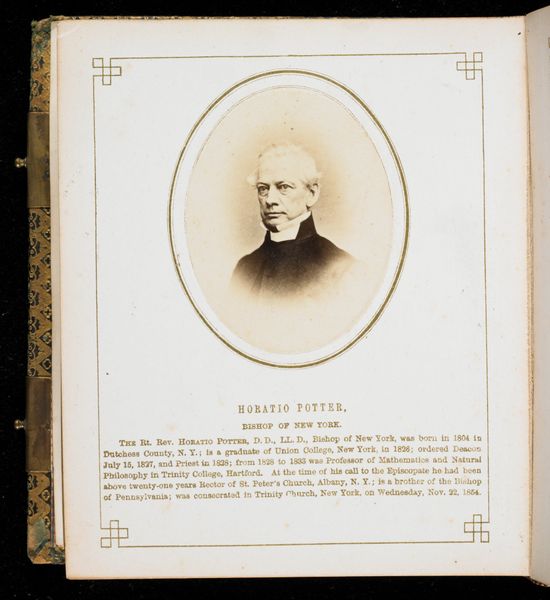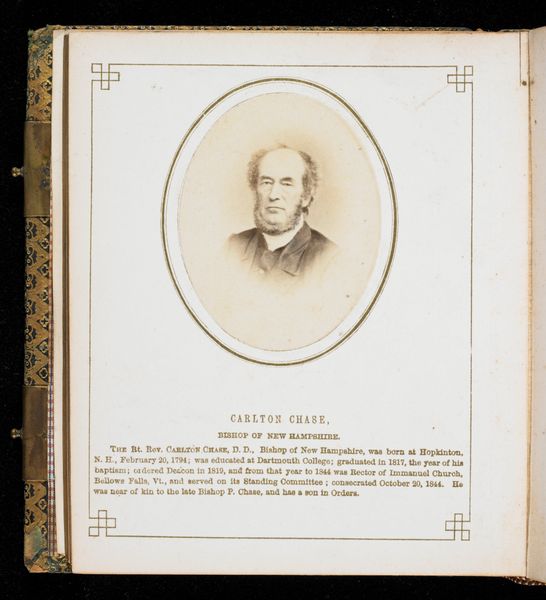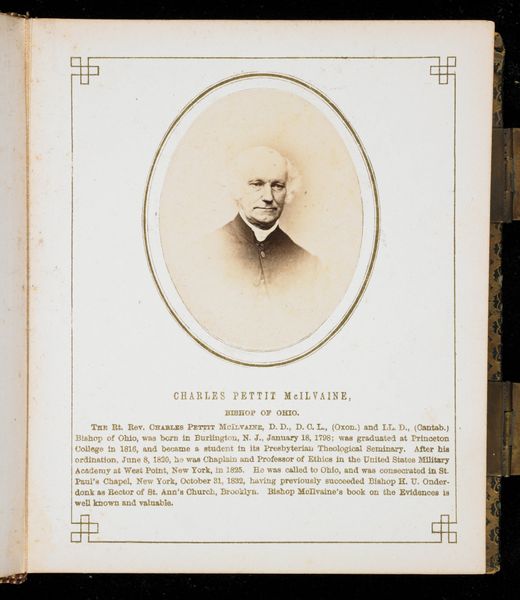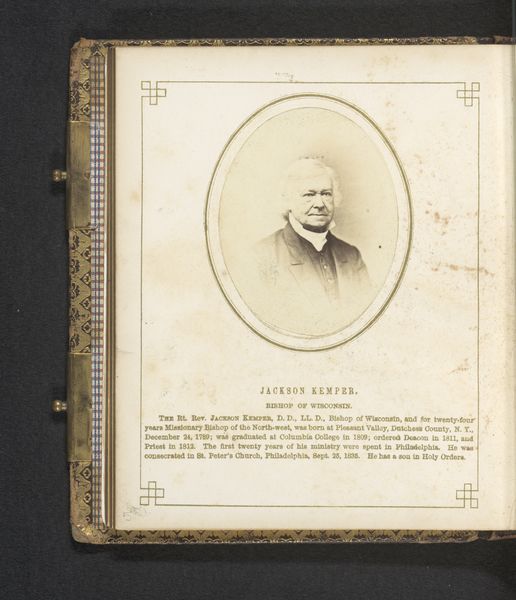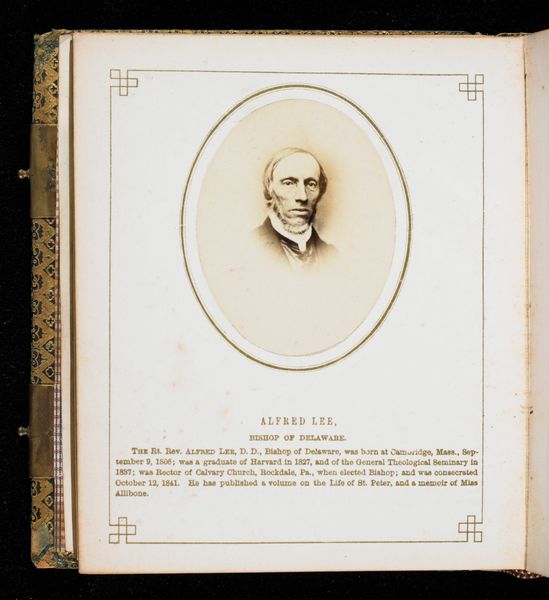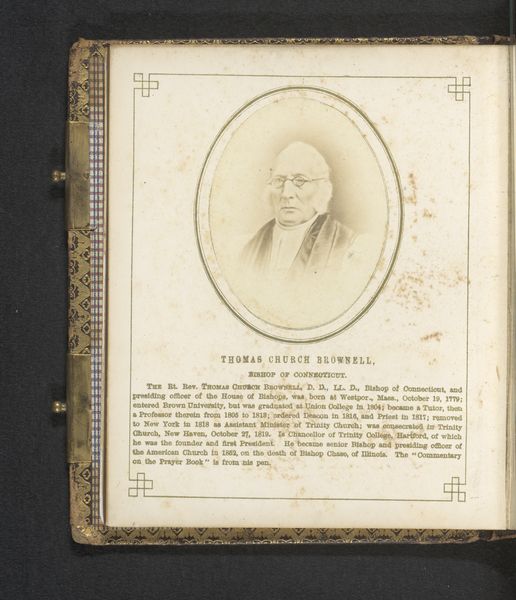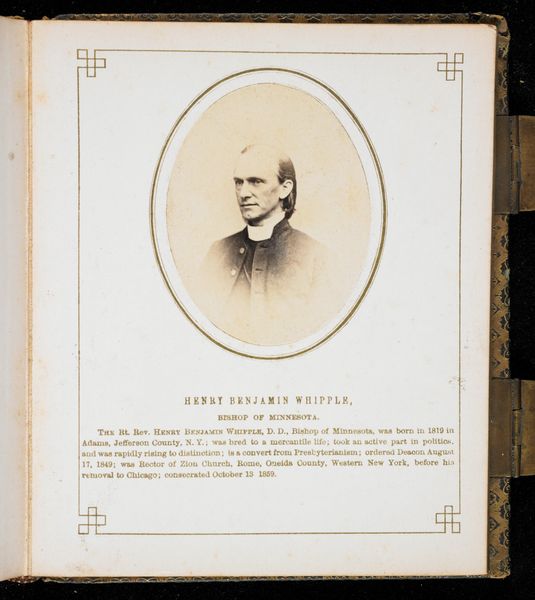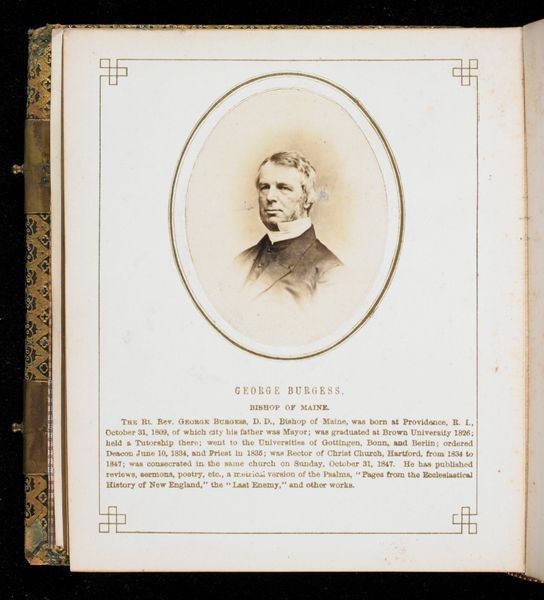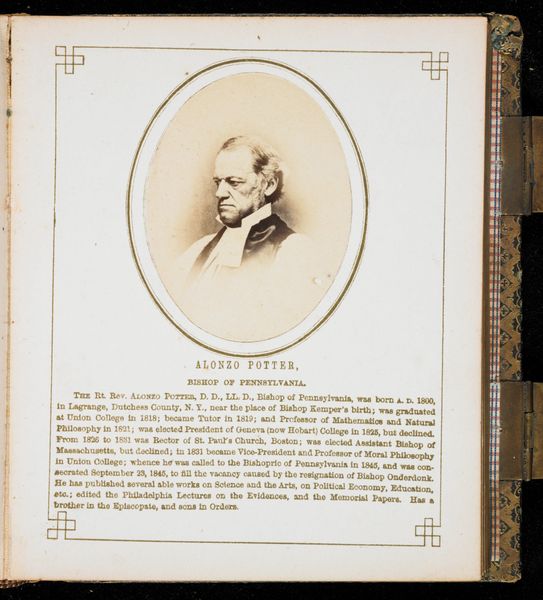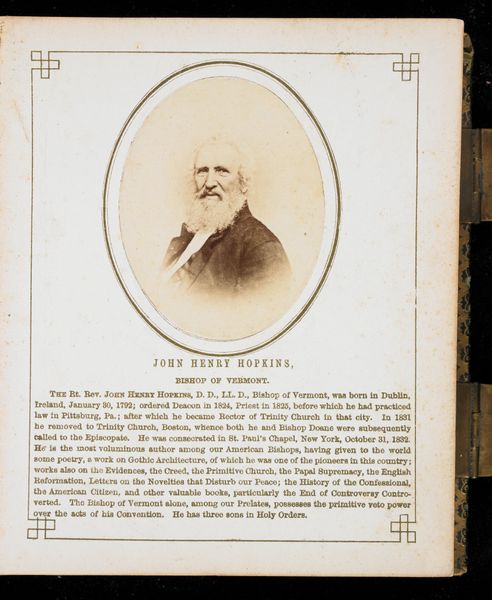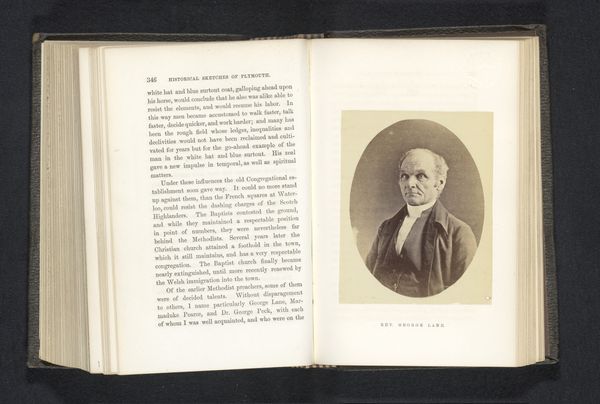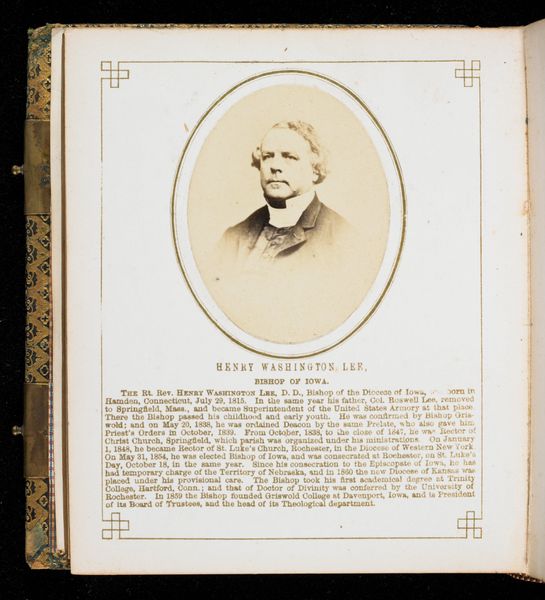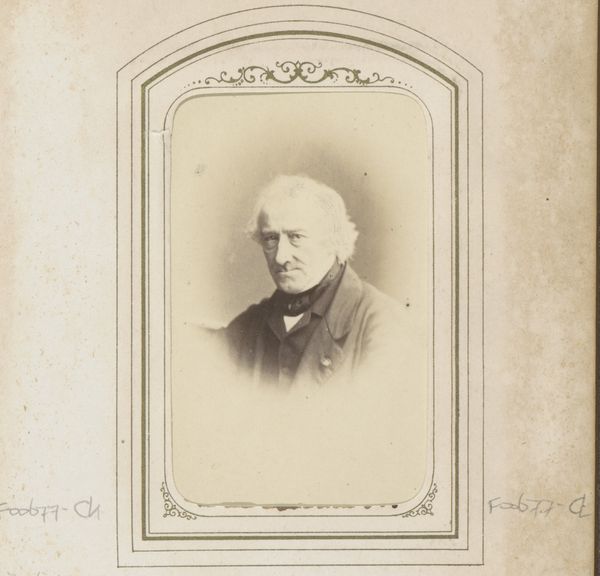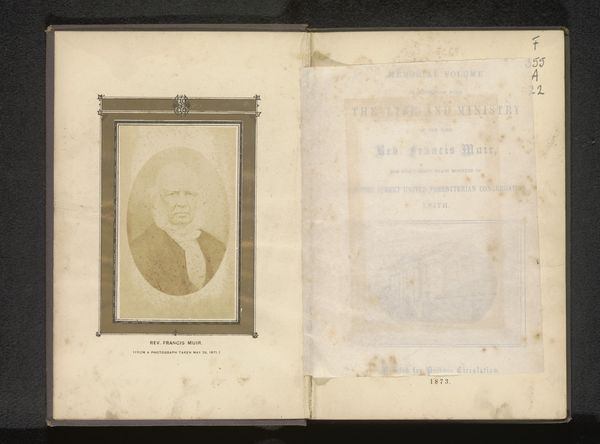
albumen-print, paper, photography, albumen-print
#
albumen-print
#
portrait
#
paper
#
photography
#
albumen-print
Dimensions: 2 3/4 x 2 1/8 in. (6.99 x 5.4 cm) (image)5 3/4 x 4 3/4 in. (14.61 x 12.07 cm) (mount)
Copyright: Public Domain
Curator: Here we have an albumen print from 1862. It’s a portrait of George Upfold by Jeremiah Gurney, now residing at the Minneapolis Institute of Art. Editor: Looking at this portrait, I immediately sense a powerful figure, the lines around his eyes hint at profound wisdom and authority, even a hint of weariness. There's such gravitas. Curator: Indeed. Consider the tight framing and oval vignette which isolates Upfold from the chaos, enhancing his introspective expression and allowing for the viewer to engage more closely with his stoic face. Note too, the contrasting dark coat set against the soft, lighter tones of the paper which emphasizes the formality and solemnity of the time period. Editor: Beyond the aesthetic choices, it’s important to remember Upfold himself. Bishop of Indiana, educator, and a man who journeyed from England to build a life in a burgeoning America. I wonder what experiences molded the expression captured by Gurney. What role did Upfold play in the theological and societal shifts of the mid-19th century, on the brink of the Civil War? Did he grapple with slavery, abolition, or the growing pains of industrialization within his diocese? This is the type of information that helps us understand both him and Gurney's intentions more fully. Curator: A valuable perspective. Yet, focusing solely on these contextual details overshadows Gurney’s compositional decisions, how the albumen print process contributes to the almost ethereal quality of the photograph itself. Semiotics play a significant role here too, no? His slight, asymmetric gaze; his somber demeanor and priestly attire all represent signs indicating pious intellectualism in the visual language of the day. Editor: And decoding those signs is crucial to contextualizing Upfold’s position within the established hierarchy. His attire isn’t merely aesthetic—it represents power and institutional authority, whether benevolent or not, that is important to acknowledge. Analyzing Upfold requires an intersectional lens; what freedoms or restraints was he experiencing? Curator: You have offered such valuable considerations here today, that I will hold to for all my curations going forward. Editor: And to you as well. It helps me see beyond my own biases to consider formalism in artwork of this period.
Comments
No comments
Be the first to comment and join the conversation on the ultimate creative platform.
